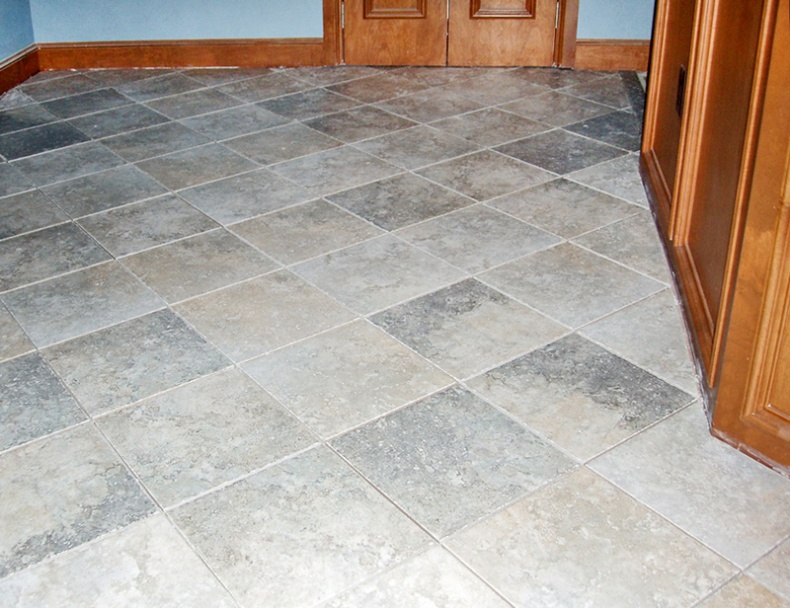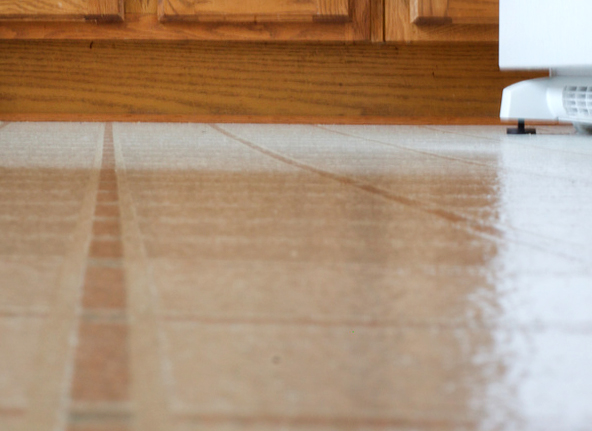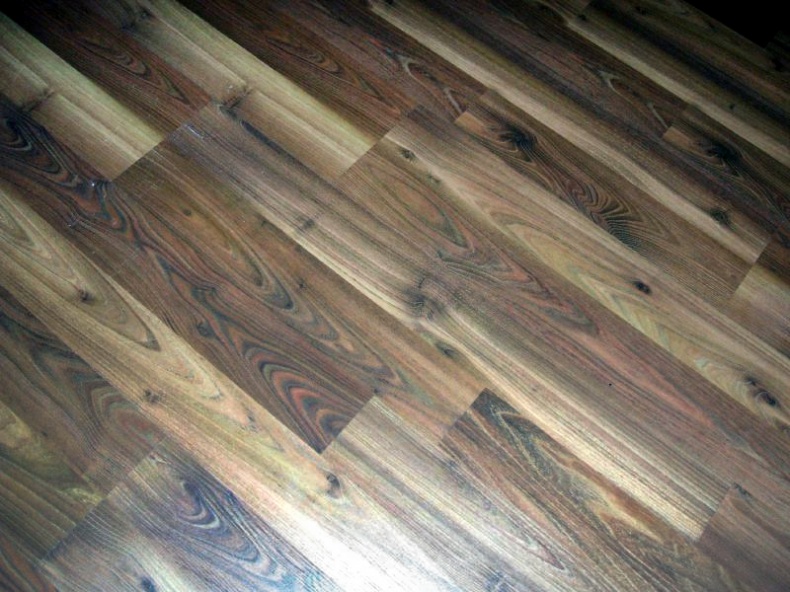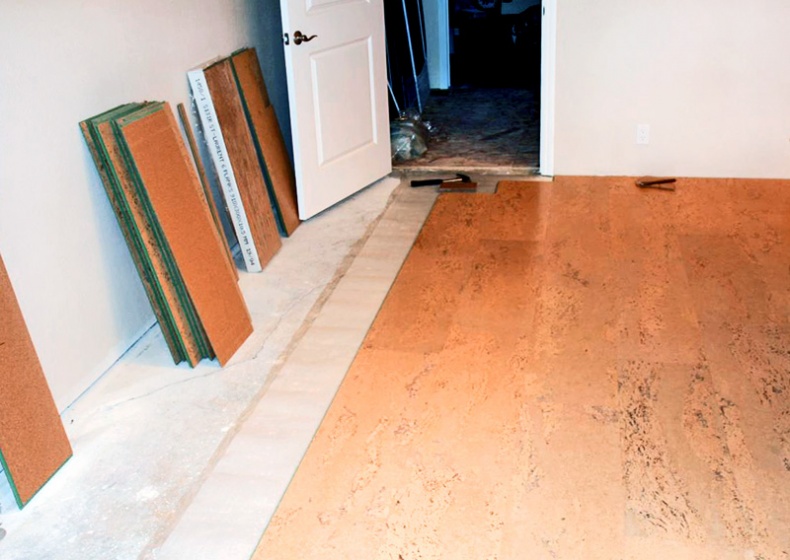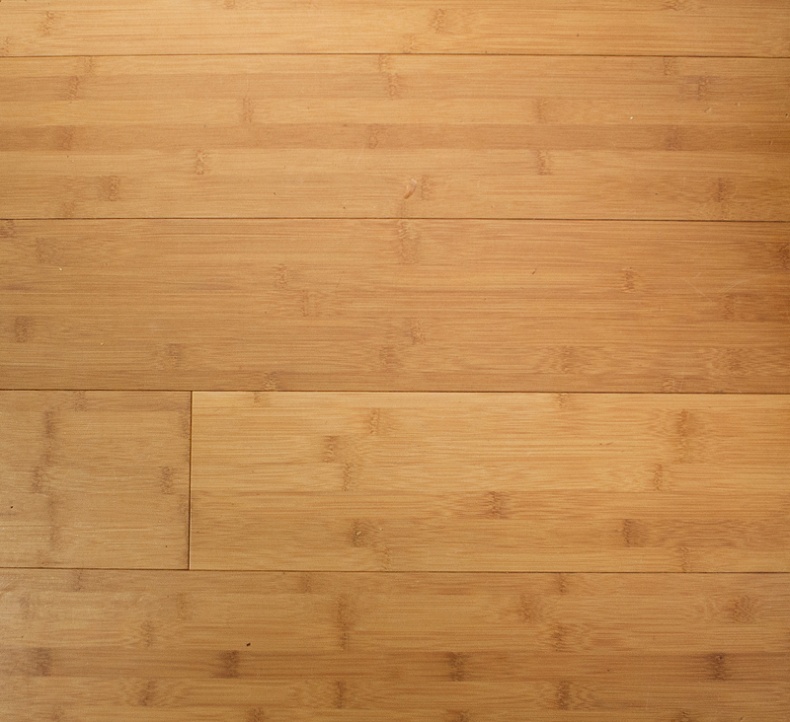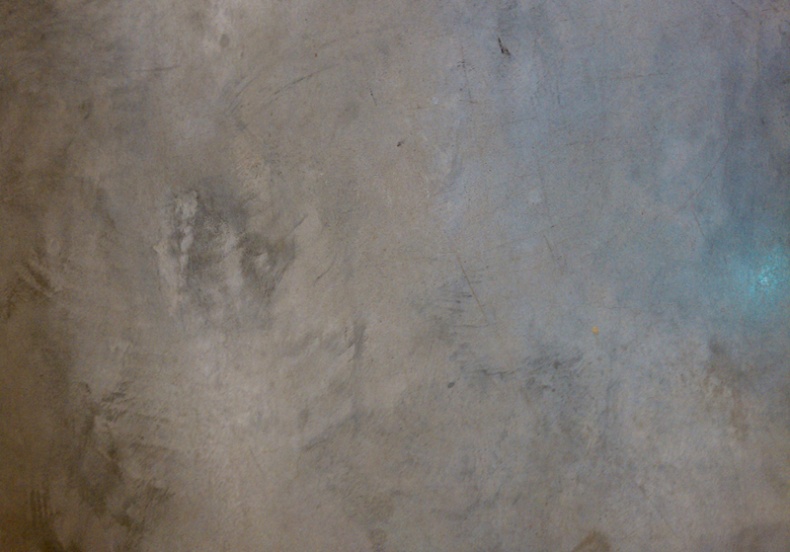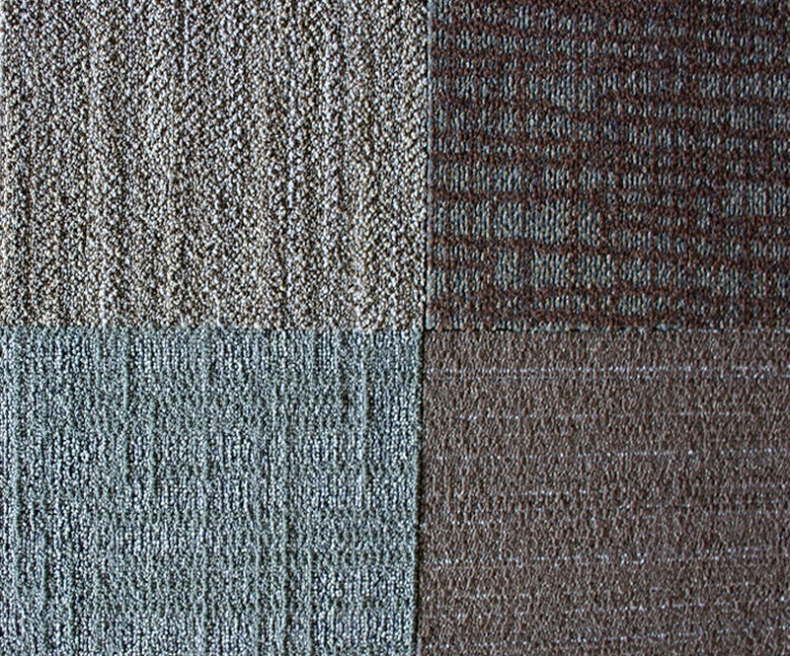
Ceramic Tile by Mtneer man
One of the most effective ways to make your home more environmentally friendly is to use sustainable flooring. Switching to "green" floors also benefits anyone with health concerns such as allergies and asthma, as well as people looking to save some money long-term (and who isn't?).
If you're wondering what exactly qualifies as sustainable flooring, it's flooring whose entire life cycle is sustainable: from growing and farming the flooring material, manufacturing, installation, and use to disposing the flooring. Green flooring typically contains natural or recycled material, is often grown or harvested locally, and ideally comes from a quickly renewable, widely available, or easily replenishable source (such as cork, bamboo, or clay).
Why sustainable flooring?

Linoleum by Gerry
The most obvious reason to switch to sustainable flooring is environmental conservation. For example, hardwood floors such as maple, oak, and birch traditionally require the clear-cutting of forests or the cutting of endangered trees for specific wood types. Sustainable flooring material either avoids the need to cut down trees altogether by not using wood, or, if wood is desired, it's harvested using sustainable practices (abstaining from clear-cutting, replanting trees, and leaving the surrounding wildlife undisturbed).
Another way in which green flooring reduces environmental impact is by sourcing material from local or regional farms and factories. This way, there's less shipping involved to deliver the material to a store or a customer, which reduces fossil fuel use and air pollution.
Many people install sustainable floors for another important reason: to improve indoor air quality. Synthetic flooring made of vinyl, carpet, and some flooring glues and finishes emit gases (called volatile organic compounds, or VOCs) that are bad for our health. VOCs aggravate allergies and asthma and can even induce headaches and skin rashes. Sustainable flooring minimizes this health risk by using natural materials that don't require as many chemicals or synthetics during their production, lowering the production and release of VOCs.
Finally, there are the financial savings. This may not seem so obvious, since sustainable flooring products generally cost more than conventional ones. However, the long-term savings can outweigh the initial cost: sustainable floors tend to last longer (which reduces the environmental and financial costs of sourcing, shipping, and installing new floors); they cost less to dispose of; and the health savings they provide add up, thanks to better air quality.
Types of sustainable flooring material
Once you've decide to install green flooring for your home, you'll need to consider which material suits your needs best. Homeowners nowadays are spoilt for choice when it comes to sustainable flooring products.
Wood

Wood Floor
by Daniel R. Blume
This ubiquitous flooring material is easy to clean and maintain, long-lasting, and it can increase your home's market value. Wood flooring can be sustainable if you buy from stores that sell reclaimed, recycled, or salvaged wood. This wood comes from old structures like houses, barns, factories, bridges, or even ships. Some people especially like the aged texture of salvaged wood.
If you prefer new wood, buy material from forests that are approved by the Forest Stewardship Council. The wood from FSC-certified forests are sourced using sustainable practices. This means endangered forests are conserved and that wildlife and waterways around the forests are protected, as are the rights of Aboriginal peoples and local communities.
In addition to buying sustainable wood, make sure the varnish and floor finish you intend to use are low in VOCs, since these chemicals traditionally contain a high volume of these harmful gases.
Cork

Cork Flooring by Steve Ryan
Cork is a common, all-natural, sustainable flooring material. It's very green, since harvesting cork trees only requires stripping off their bark, which then grows back quickly for another harvest. This process also doesn't kill the trees, further conserving the environment. Cork has insulating, cushioning, and water-resisting qualities. Since it's a popular choice, cork flooring also comes in many colours and designs — and in a wide price range. Make sure the floor adhesive and finish you choose are also low in VOCS.
Linoleum
A great green alternative to vinyl, linoleum is another widely used all-natural flooring alternative. It's made from linseed oil mixed with reclaimed materials such as ground sawdust and cork dust, and it's completely biodegradable. Much like cork, there are many colours and patterns to choose from on the market at a variety of prices. It's also easy to clean and maintain. Do note, however, that after installation, linoleum floors give off an odour due to the linseed oil. This is harmless and goes away after a few weeks.
Bamboo

Bamboo Texture by Ray
Villalobos
A grass that grows quickly, bamboo is a sustainable flooring choice since it's ready to be harvested in two to three years, compared to decades for hardwood trees. Another plus is that harvesting bamboo doesn't kill the plant. This flooring choice is probably the closest in hardness and feel to traditional wood, which might be important if you love wooden floors but are looking for a green alternative. One thing to keep in mind is that bamboo is often sourced from Asian countries, where forest sustainability practices are less stringent or non-existent. This also means fossil fuel use and air pollution due to shipping are considerable. Also, some bamboo processing plants produce formaldehyde, a VOC gas, during manufacturing. Research manufacturers and retailers if you're serious about being as sustainable and healthy as possible with bamboo flooring.
Ceramic Tile
Produced from natural clays, ceramic tiles come from a limitless source material that is found locally, is stain resistant and extremely durable, and lasts a long time (50 years is not uncommon). They're great for high-traffic or outdoor areas of your home. Another selling point is that they emit no VOCs. You can also buy recycled ceramic tiles, which contain glass, stone, and dirt, to go even more green.
Concrete

Concrete Floor by Chris
Baransk
Another green flooring material in plentiful supply, concrete is often locally made, reducing fossil fuel use from shipping. Its natural finish means you don't need additional varnishes or finishes, which improves air quality. Of course, it's durable and long-lasting, and it's also slow to heat or cool. This keeps your interior temperate and reduces energy use and the cost for heating and cooling.
However, traditional concrete is less green than other flooring materials. The concrete-making process requires water, a valuable natural resource, and cement, which is produced by grinding together clay, limestone, and sand. This procedure is energy-intensive, uses fossil fuel, and releases carbon dioxide into the air. Fortunately, recycled concrete is starting to appear on the market, which mixes concrete with fly ash from burnt coal and recycled glass, making this flooring material greener.
Natural and Recycled Carpet

Recycled Carpet by Ryan
Somma
Traditionally, carpet is not considered a green flooring material, since it is often made of synthetic materials such as nylon, polypropylene, and polyester. These materials release a high volume of VOCs after installation. However, natural and recycled carpet alternatives are on the market: wool, cotton, and jute are common natural carpet materials, while recycled carpet can consist of plastic soda bottles and old carpet. These alternatives use renewable, biodegradable, or recycled material to make soft, warm, sound-absorbant flooring.
In addition, with the Carpet and Rug Institute, carpeting is measured for its effect on indoor air quality (IAQ). Look for carpets with a green IAQ label to ensure they emit a low level of VOCs.
E. CH.


